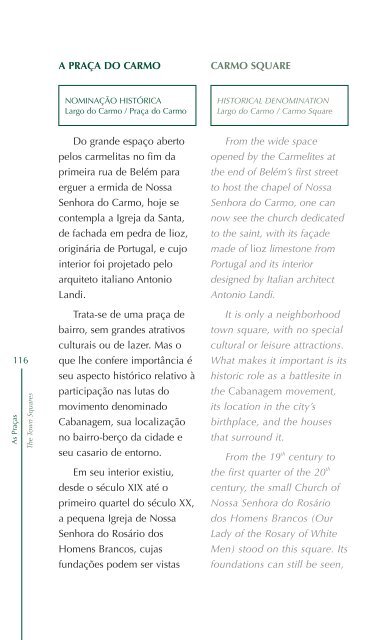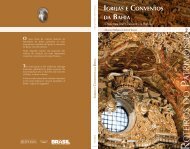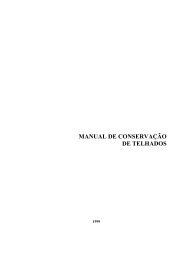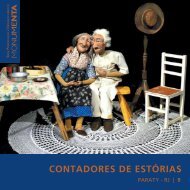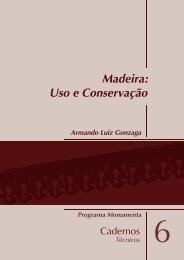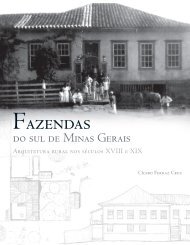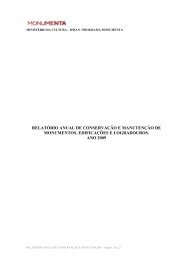LARGOS, CORETOS E PRAÇAS DE BELÉM - Monumenta
LARGOS, CORETOS E PRAÇAS DE BELÉM - Monumenta
LARGOS, CORETOS E PRAÇAS DE BELÉM - Monumenta
You also want an ePaper? Increase the reach of your titles
YUMPU automatically turns print PDFs into web optimized ePapers that Google loves.
As Praças<br />
116<br />
The Town Squares<br />
A PRAÇA DO CARMO<br />
NOMINAÇÃO HISTÓRICA<br />
Largo do Carmo / Praça do Carmo<br />
Do grande espaço aberto<br />
pelos carmelitas no fim da<br />
primeira rua de Belém para<br />
erguer a ermida de Nossa<br />
Senhora do Carmo, hoje se<br />
contempla a Igreja da Santa,<br />
de fachada em pedra de lioz,<br />
originária de Portugal, e cujo<br />
interior foi projetado pelo<br />
arquiteto italiano Antonio<br />
Landi.<br />
Trata-se de uma praça de<br />
bairro, sem grandes atrativos<br />
culturais ou de lazer. Mas o<br />
que lhe confere importância é<br />
seu aspecto histórico relativo à<br />
participação nas lutas do<br />
movimento denominado<br />
Cabanagem, sua localização<br />
no bairro-berço da cidade e<br />
seu casario de entorno.<br />
Em seu interior existiu,<br />
desde o século XIX até o<br />
primeiro quartel do século XX,<br />
a pequena Igreja de Nossa<br />
Senhora do Rosário dos<br />
Homens Brancos, cujas<br />
fundações podem ser vistas<br />
CARMO SQUARE<br />
HISTORICAL <strong>DE</strong>NOMINATION<br />
Largo do Carmo / Carmo Square<br />
From the wide space<br />
opened by the Carmelites at<br />
the end of Belém’s first street<br />
to host the chapel of Nossa<br />
Senhora do Carmo, one can<br />
now see the church dedicated<br />
to the saint, with its façade<br />
made of lioz limestone from<br />
Portugal and its interior<br />
designed by Italian architect<br />
Antonio Landi.<br />
It is only a neighborhood<br />
town square, with no special<br />
cultural or leisure attractions.<br />
What makes it important is its<br />
historic role as a battlesite in<br />
the Cabanagem movement,<br />
its location in the city’s<br />
birthplace, and the houses<br />
that surround it.<br />
From the 19 th century to<br />
the first quarter of the 20 th<br />
century, the small Church of<br />
Nossa Senhora do Rosário<br />
dos Homens Brancos (Our<br />
Lady of the Rosary of White<br />
Men) stood on this square. Its<br />
foundations can still be seen,


